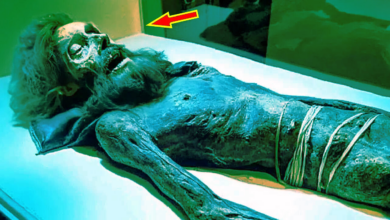What’s Behind the Sealed Gate in Jerusalem? Is Jesus About to Return?

**What’s Behind Jerusalem’s Sealed Gates? Is Jesus Returning Soon?**
According to Jewish tradition, the Messiah will enter Jerusalem through this gate – the Golden Gate, also known as the “Gate of Mercy,” located in the heart of Jerusalem’s Old City. For more than 500 years, this gate has been sealed with heavy stones, hiding countless secrets, hopes, and powerful prophecies. But this is more than just a sealed door – it is a profound spiritual symbol that connects the beliefs of Jews, Christians, and Muslims.
According to Jewish tradition, the Messiah will pass through this gate to bring salvation. Christians believe that Jesus will return by the same route. Meanwhile, Muslim beliefs also attach apocalyptic significance to this area.
**But why is the Golden Gate still closed? Who had the power to do it – and why?**
The gate is located on the eastern wall of Jerusalem, facing the Mount of Olives – a place sacred to all three major religions. The location is no coincidence. In Jewish mysticism, the Messiah would come from the east, and the Mount of Olives was prophesied to part to make way for salvation.
The gate’s current structure shows layers of history. Archaeologists such as Dan Bahhat, Leen Ritmeyer and David Ussishkin have suggested that the architecture may date back to the Byzantine period (6th–7th centuries AD), and may include elements from the Umayyad (early Islamic) period.
However, underneath the gate are remnants of gates from the Second Temple period, suggesting that it has been an important site for more than two millennia. Byzantine Christian rulers believed that this was where Jesus would return, so they rebuilt the gate as a sacred symbol.
The book of Ezekiel (Ezekiel 44:1–3) describes an eastern gate that was sealed because Jesus had passed through it and would remain closed until the Messiah appeared. Jewish texts such as the Talmud and Midrash also emphasize the belief that the Messiah would pass through this gate. The Christian Bible also recounts Jesus entering Jerusalem on a donkey – an act seen as a fulfillment of the prophecy in Zechariah (Zechariah 9:9).
This event is commemorated annually by Christians during Palm Sunday. Islam, while not directly mentioning the Golden Gate in the Quran, considers the area to have apocalyptic significance, especially because of its proximity to the Al-Aqsa Mosque – the third holiest site in Islam.
**So who sealed the gate?**
In 1541, during the reign of Sultan Suleiman the Magnificent – the Ottoman Empire’s most famous ruler – the Golden Gate was sealed. He also rebuilt the walls of Jerusalem, which included the closing of the gate. This decision was not only religious but also a political move – intended to prevent potential rebellions based on Messianic beliefs.
Suleiman also built a Muslim cemetery right in front of the gate, creating a “ritual shield”. According to Jewish law, contact with graves makes people unclean, especially the priestly class (Kohen, Levite), thereby preventing them from entering the holy place.
Suleiman’s decision is a clear example of the intersection of political power and religious symbolism in Jerusalem. In Judaism, the Golden Gate symbolizes the hope of salvation, emphasized in texts such as the Talmud and Midrash. Many Jews see the restoration of Jerusalem as part of the Messianic era.
For Christians, the gate is associated with the memory of Jesus’ entry into the city – a moment recorded in all four Gospels (e.g. Matthew 21:1–11, John 12:12–19). Many believers believe that Jesus will return through this same gate to bring final judgment and salvation to humanity.
In Islam, some scholars have suggested that the apocalyptic hadiths may be linked to the area, as many descriptions speak of a major event coming from the east. The gate’s proximity to the Al-Aqsa Mosque adds to its sacredness.
**The Golden Gate – A Symbol of Modern Tension**
The sealed gate has become a symbol of not only religious but also political disputes. Jerusalem remains one of the most fiercely contested cities in the world. Research from the Jerusalem Policy Institute shows that religious symbolism at places like the Golden Gate has a powerful influence on public sentiment and political negotiations.
Despite the gate’s closure, archaeological excavations continue. Research suggests that the gate’s foundations may date back to the time of King Solomon (10th century BC) or to Herod’s expansion in the 1st century – a period associated with the Second Temple.
The discovery of overlapping architectural layers suggests that the gate was built, destroyed and rebuilt many times – reflecting Jerusalem’s turbulent history.








